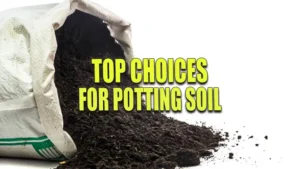How to Grow and Care for Your Pothos: The Ultimate Success Guide
- July 2, 2024
- 0 comment
Discover how to grow and care for your Pothos with our ultimate guide! Get the best tips to ensure vibrant and healthy plants. Interested in enhancing your home with greenery? The Pothos plant is an excellent option for beginners and experienced gardeners alike.

This guide covers all the essentials of growing and caring for Pothos. We’ll discuss the best locations for your plant, along with proper watering techniques and other care tips to help your Pothos flourish. Begin your journey to a healthier, greener home today.
Table of Contents
- Understanding Pothos
- Optimal Growing Conditions
- Planting Guides
- Routine Care and Maintenance
- Troubleshooting Common Issues
- Propagation Techniques
- Advanced Tips for Long-term Success
- Conclusion
- FAQs
Understanding Pothos

Pothos (Epipremnum aureum), commonly referred to as Devil’s Ivy, is renowned for its resilience and aesthetic appeal, which make it a favorite among indoor plant enthusiasts. This section delves deeper into the botanical aspects and adaptive traits of Pothos, alongside a comprehensive overview of its popular varieties.
Botanical Characteristics: Pothos plants exhibit a fascinating array of leaf variegations, which are primarily due to genetic mutations affecting chlorophyll distribution. These mutations lead to patterns that can significantly influence photosynthesis efficiency. The plant’s waxy, heart-shaped leaves have a high surface area to volume ratio, enhancing their ability to absorb volatile organic compounds (VOCs) from the air, thus improving indoor air quality.
Adaptability: Scientifically, Pothos are noted for their exceptional adaptability to low-light conditions, a trait governed by their ability to maintain chlorophyll concentration under diminished sunlight. This makes them particularly well-suited to indoor environments where natural light is limited. Research indicates that Pothos can adapt their photosynthetic machinery to various light intensities, a feature that explains their widespread popularity in offices and homes.
Different Varieties
To aid in understanding and selection, here is a detailed table of the most popular Pothos varieties, their distinctive characteristics, and ideal care conditions:
| Variety | Leaf Coloration | Light Requirements | Notable Traits |
|---|---|---|---|
| Golden Pothos | Marbled golden-yellow and green | Low to medium light | Excellent air-purifying abilities, fast-growing |
| Marble Queen Pothos | More pronounced white and green variegation | Medium light | Slower growth due to less chlorophyll, striking appearance |
| Neon Pothos | Bright, almost neon green | Medium to bright light | Vibrant color, requires more light for vividness |
| Jade Pothos | Solid green | Low light | Hardy, robust growth, less prone to pests |
Scientific Insights: Each variety’s growth rate and leaf coloration intensity are influenced by genetic factors that determine chlorophyll levels and light absorption capabilities. For instance, the Marble Queen Pothos, with its extensive variegation, tends to grow slower compared to the more chlorophyll-dense Jade Pothos. This is because areas of white variegation lack chlorophyll and do not contribute to photosynthesis, thereby affecting the overall growth speed.
Understanding these varieties in depth helps in selecting the right Pothos that not only complements your home’s aesthetics but also thrives in your particular indoor environment. Whether you prefer the striking variegations of Marble Queen or the lush, dense foliage of Jade, there’s a Pothos to suit every plant lover’s taste and environment.
Optimal Growing Conditions

Light: Pothos plants exhibit remarkable adaptability in varying light conditions, but optimal growth is observed under specific lighting. Scientific studies indicate that photosynthetic efficiency in Pothos peaks under bright, indirect light, where the intensity ranges from 100 to 800 foot-candles. Direct sunlight, providing over 1000 foot-candles, can lead to chlorophyll degradation which manifests as scorched leaves.
Temperature and Humidity: The ideal temperature range for Pothos is between 60°F to 80°F (15°C to 26°C), with relative humidity levels of 40% to 60%. This tropical plant benefits from higher humidity, which facilitates stomatal opening, essential for photosynthesis and transpiration. Prolonged exposure to temperatures outside this range can disrupt these physiological processes, resulting in stressed plants.
Soil Requirements: Soil composition plays a critical role in the health of Pothos. A study on soil media for indoor plants recommends a pH between 5.5 and 6.5 for optimal nutrient uptake. The recommended mix of peat moss, perlite, and vermiculite provides a balance of aeration, moisture retention, and drainage, crucial for preventing root diseases like phytophthora, which thrives in poorly drained soils.
Optimal Growing Conditions for Pothos
| Condition | Ideal Range | Scientific Notes |
|---|---|---|
| Light | 100-800 foot-candles (Indirect) | Avoid direct light to prevent chlorophyll degradation. |
| Temperature | 60°F to 80°F (15°C to 26°C) | Supports active growth and physiological processes. |
| Humidity | 40% to 60% | Enhances stomatal efficiency and nutrient transport. |
| Soil pH | 5.5 to 6.5 | Optimizes nutrient availability and root health. |
Planting Guides
1. Choosing the Right Container:

- Select a pot that is 1-2 inches larger in diameter than the current pot or root ball of your Pothos. This provides enough space for growth without excessive moisture retention. Materials like ceramic, clay, or plastic can be used, but ensure each has drainage holes.
- Adequate drainage is crucial to prevent root rot. Ensure the pot has one or more holes at the bottom. Consider using a saucer to catch excess water.
2. Potting and Repotting:

- Step-by-Step Potting:
- Place a layer of pebbles, gravel, or broken pottery pieces at the bottom of the pot to enhance drainage.
- Fill the pot partially with a well-draining potting mix. A recommended mix includes parts of peat, perlite, and coarse sand to ensure good aeration and moisture retention.
- Carefully remove the Pothos from its current container, gently loosening the root ball to encourage new root growth.
- Position the plant so that the top of the root ball is about 1 inch below the rim of the pot, allowing room for watering.
- Add more potting mix around the roots until it is level with the top of the root ball, then press down lightly to secure the plant and eliminate any air pockets.
- Repotting Frequency and Method:
- Pothos should be repotted every 2-3 years or when the roots start to crowd. This refreshes the soil and gives roots new room to grow.
- When repotting, gently tease apart densely packed roots and trim away any that are rotted or excessively long using clean, sharp scissors.
3. Initial Plant Care:

- Immediately after potting, water the plant thoroughly to help settle the soil around the roots. Ensure the water flows freely from the drainage holes.
- Place your Pothos in a location that receives bright, indirect sunlight. Avoid direct sunlight, which can scorch the leaves. North or east-facing windows are typically ideal.
- For the first few weeks, check the soil moisture regularly. The top inch of the soil should be allowed to dry out slightly between waterings. This helps establish good watering habits that prevent both over and under-watering.
Routine Care and Maintenance
1. Watering:
- Pothos plants have an efficient water storage system within their leaves, allowing them to tolerate periods of dryness. Research indicates that allowing the soil to dry slightly between waterings encourages healthier root development by promoting oxygen uptake. The ideal soil moisture content should be between 20-30% before the next watering.
- Practical Guide:
- Check soil moisture by inserting your finger about an inch deep; the soil should feel dry before you water again.
- Use lukewarm water to avoid shocking the plant’s roots, especially in colder months.
- Reduce watering in winter to match the plant’s reduced metabolic rate.
2. Fertilizing:
- Pothos requires a balanced nutrient mix, primarily nitrogen (N), phosphorus (P), and potassium (K), typically in a ratio of 10-10-10. These elements support leaf growth, root development, and overall health.
- Application Tips:
- Apply a water-soluble fertilizer every 4-6 weeks during the active growth period.
- In winter, reduce to every 8-10 weeks due to slowed growth and reduced nutrient uptake.
- Avoid over-fertilizing, which can lead to salt accumulation in the soil and potential root burn.
3. Pruning:
- Regular pruning is crucial not only for aesthetics but also for promoting a fuller and healthier plant. By cutting back vines, you stimulate new growth from the nodes just below the cut.
- Technique:
- Use sterilized sharp scissors or pruning shears to make clean cuts just above a leaf node.
- Prune overcrowded or leggy sections to encourage denser growth.
- Regularly remove yellowed or dead leaves to prevent potential disease spread and to maintain visual appeal.
Troubleshooting Common Issues

Pothos is generally hardy but can occasionally be troubled by pests such as mealybugs, spider mites, and scale insects. Regular inspection of the leaves, especially the undersides and stems, can help catch infestations early. If pests are spotted, wipe them off with a cloth soaked in soapy water or use an appropriate insecticidal soap. Preventing disease starts with proper care; however, if you notice fungal spots or rot, reduce watering and improve air circulation around the plant.
Common Problems: Yellowing leaves can indicate several issues, primarily overwatering or poor drainage. Ensure your potting mix is well-draining and you’re not leaving the plant in standing water. Brown leaf tips might suggest low humidity or fertilizer burn. If it’s due to low humidity, consider increasing moisture in the air around the plant. For potential fertilizer burn, flush the soil with water to dilute the concentration of nutrients.
Propagation Techniques
1. Select a Healthy Stem:
- Identify a healthy Pothos vine that has vibrant foliage and multiple nodes (the small, brown bumps along the stem from which leaves grow). The vine should have at least 4-5 leaves and be free from any signs of pests or disease.
- Healthy stems are more likely to root successfully and grow vigorously, ensuring the best start for your new plants.
2. Cut the Stem:
- Use clean, sharp scissors or pruning shears to make a precise cut. The cut should be made just below a node, about 4-6 inches in length from the tip.
- Sterilize your cutting tool with rubbing alcohol or a 1:9 bleach-water solution to prevent disease transmission.
3. Prepare the Cuttings:
- Carefully remove the leaves near the bottom of the cutting, exposing at least one or two nodes. This is where the roots will develop.
- Leave at least two to three leaves at the top of the cutting to ensure it has enough surface area for photosynthesis.
4. Root the Cuttings:
- Water Method:
- Place the cuttings in a clean glass filled with water, ensuring that the exposed nodes are submerged.
- Use room temperature water and avoid direct sunlight to prevent algae growth and excessive heat.
- Soil Method:
- Alternatively, plant the cuttings directly in a pot filled with moist, well-draining potting mix.
- This can lead to stronger initial root development as the roots adapt directly to the soil environment.
5. Monitor and Plant:
- Water Method:
- Change the water every few days to keep it clean and oxygen-rich.
- Roots typically begin to appear within 2-4 weeks.
- Soil Method:
- Keep the soil consistently moist but not waterlogged.
- Covering the pot with plastic wrap can create a mini greenhouse effect, promoting humidity and warmth, which are conducive to root growth.
- Transplanting: Once roots are a few inches long, transplant the cuttings into individual pots with fresh potting soil. This step is crucial for transitioning the new plants to a stable growing environment.
6. Post-Propagation Care:
- After transplanting, place the new plants in an area with bright, indirect light and continue regular care as described in the care guide for mature Pothos plants.
- Monitor the new plants for growth and adjust care as needed to accommodate their young and developing systems.
Advanced Tips for Long-term Success
Ensuring Robust Plant Health:

- Aeration of Soil: Occasionally aerate the potting mix to prevent compaction, which can affect drainage and root growth. Simply poke holes gently into the soil with a stick or a small tool.
- Refresh the Soil Annually: Even without a full repot, replacing the top layer of soil with fresh, nutrient-rich mix can boost plant health and spur growth.
- Regular Inspection: Regularly inspect your plant for signs of stress or disease. Early detection can make treatment more manageable and less disruptive.
- Varied Light Exposure: Rotate your Pothos periodically to ensure all sides receive equal light, promoting even growth and preventing legginess.
Rejuvenating Older Plants:
- If your Pothos begins to look sparse or leggy, consider giving it a “hard prune.” Cut back the stems significantly, leaving about 6-8 inches. This might seem drastic, but Pothos is resilient and will often respond with vigorous new growth.
- After pruning, apply a light fertilizer to support recovery and new growth. Be mindful not to overfertilize, as this can stress the plant further.
Related Post
- How to Build a Barn: A Step-by-Step Guide for Beginners
- How to Build a Sustainable Compost Bin: Easy and Eco-Friendly DIY
- How to Fertilize Bougainvillea: A Complete Guide for Stunning Blooms
- How to Fertilize Apple Trees: Essential Tips for a Bountiful Harvest
- How to Fertilize Lemon Trees: Secrets for Thriving Citrus
- How to Fertilize Avocado Tree: A Step-by-Step Guide for Lush Growth
- 10 Best Bow Saws to Buy in 2024: Top Picks for the Money
- Best Miter Saw For Beginners
- Top 10 Pruning Saws to Buy in 2024: Best for the Money
- 7 Best Pocket Chainsaw
Conclusion
Growing and caring for Pothos is not just about maintaining a plant; it’s about cultivating a piece of living decor that can enhance your living or work space. This guide has walked you through each step necessary for nurturing robust Pothos plants—from understanding the basic requirements to advanced care techniques. With patience and attention, your Pothos can thrive for years, becoming a testament to your gardening skills. Remember, the key to success lies in consistent care and a willingness to learn from the plant itself.
FAQs
- Can I grow Pothos in water indefinitely?
Yes, It can be grown in water without soil. However, for long-term growth, adding liquid fertilizer periodically is recommended to provide necessary nutrients. - How often should I repot my Pothos, and why is it important?
Repot your Pothos every 2-3 years or when you notice the roots are crowded and pushing against the container. Repotting helps refresh the soil, provides more room for root growth, and improves overall plant health. - What are the signs that my Pothos needs more light?
If the leaves of your Pothos become less variegated, start to yellow, or the growth slows significantly, it may need more light. Try moving it to a brighter spot that receives indirect sunlight. - Is it necessary to prune Pothos, and if so, how do I do it correctly?
Pruning is not necessary but recommended to keep your Pothos bushy and full. Simply cut back the longer vines just above a leaf node to encourage more branches and fuller growth. - What should I do if the leaves of my Pothos start turning brown at the tips?
Brown tips can be a sign of low humidity or over-fertilization. Increase humidity around the plant with a humidifier or pebble tray and ensure you’re not overfeeding it. - How can I make my Pothos grow faster?
To encourage faster growth, ensure your Pothos has optimal light, sufficient water without being waterlogged, and regular feedings during the growing season with a balanced fertilizer. - What are some common pests that affect Pothos, and how can I deal with them?
Common pests include spider mites, scale insects, and mealybugs. Treat infestations early with neem oil or insecticidal soap and keep the leaves clean by wiping them down regularly. - Can Pothos be toxic to pets?
Yes, It contains compounds that can be irritating and toxic when ingested by pets. It’s best to keep the plant out of reach if you have curious pets at home.
Ready to turn your Pothos into a thriving green spectacle? With these tips and a bit of care, you’re all set to watch your green companion flourish. Happy gardening!

Benjamin Brooks
Forestry AuthorGreetings! I'm Benjamin Brooks, and my journey over the past 15 years has revolved around the fascinating realms of content creation, expertise in snow clearing, and the intricate world of lumberjacking and landscaping. What began as a simple curiosity about the natural world and heavy machinery has evolved into a passionate profession where my love for crafting words intertwines seamlessly with my lumberjacking and garden skills.













Leave your comment